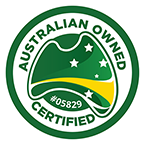
If a fire extinguisher fails to discharge, it should be replaced immediately. This can be a serious safety hazard because it can allow the fire to spread and damage property or injure people. Fire extinguisher conditions are one of the main priorities when checking and testing fire equipment.
A fire extinguisher’s pressure rating is the maximum amount of pressure at which it will function properly. The pressure rating is not based on any actual test, but rather on industry standards for testing. While some manufacturers may list their products as having a specific pressure rating, this does not mean that the product will actually function with that pressure in use. The most important factor in determining whether a fire extinguisher will work properly is making sure that its pressure rating matches what is printed on the label or specifications sheet for the product.
A fire extinguisher is a device used to put out fires. It is an essential safety gear that can be found in many places, including homes, offices and vehicles. Fire extinguishers are tested regularly to ensure they work properly and do not pose a danger to the public.
The process of testing fire extinguishers involves checking their seals, nozzle tension and functionality. A fire extinguisher should be forced by hand at least once every six months to ensure it has been properly maintained. Tests may also be performed on older models if they have not been used in a long time.

Fire Extinguishers as Safety Gear A fire extinguisher is a device used to put out fires. It is an essential safety gear that can be found in many places, including homes, offices and vehicles. Fire extinguishers conditions are tested regularly to ensure they work properly and do not pose a danger to the public.
The process of testing fire extinguishers involves checking their seals, nozzle tension and functionality. A fire extinguisher should be forced by hand at least once every six months to ensure it has been properly maintained. Tests may also be performed on older models if they have not been used in a long time.
Fire extinguisher testing is important because it helps owners keep their fire extinguishers working properly by ensuring they are tested regularly and maintained properly. The testing process also helps prevent accidents from occurring due to faulty equipment or neglecting safety gear like fire extinguishers. Contact us here for more information about testing the extinguisher condition.
For most fire extinguishers, you must first discharge the unit to remove any pressure built up inside. The discharge is accomplished by pressing a button on the nozzle or handle. This will release all of the stored contents into the area around it. Once this is complete, you can then open the fire extinguisher and inspect it.
If you find any sign of leakage from your fire extinguisher, then it should be replaced immediately. Leaks can happen when there’s an issue with the seal around the nozzle, or if there’s been some damage that has compromised the integrity of your fire extinguisher conditions.
The first thing you need to do is make sure that the extinguisher is charged and ready to go. This means that it has been filled with the correct amount of water and has been charged for a period of time. For most fire extinguishers, this will be around 20 minutes.
If your fire extinguisher has not been charged within the required time period, then it may need to be recharged. To do this, simply fill it with water and charge again for about 20 minutes.
Once your fire extinguisher is ready, you can use it on a real fire by placing it next to or near your burning object and activating its nozzle using either a pull or push button located on the handle of the unit.


